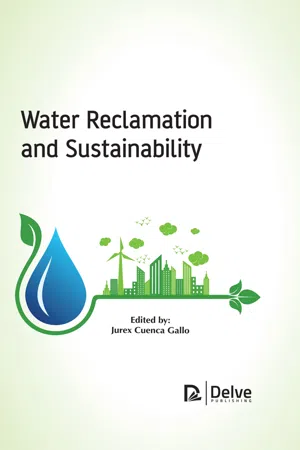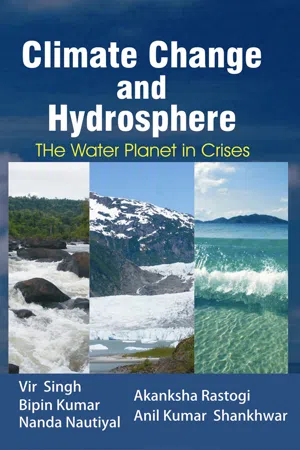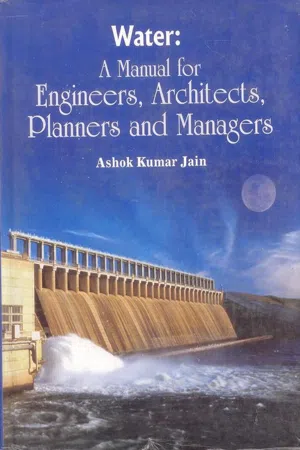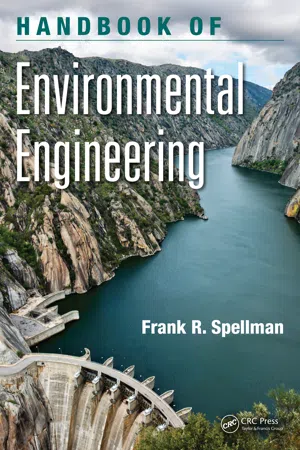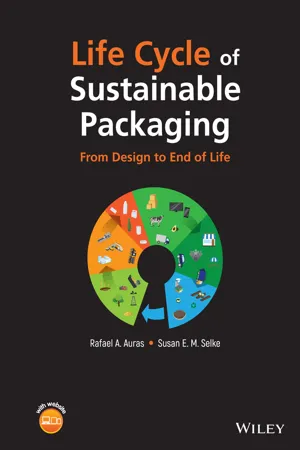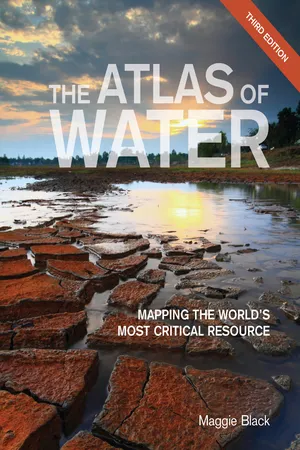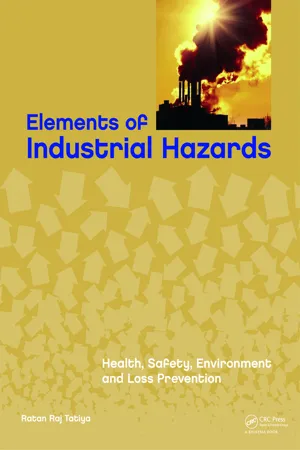Geography
Polluted Water
Polluted water refers to water that has been contaminated by various harmful substances, such as chemicals, microorganisms, or other pollutants. This contamination can occur due to human activities, industrial processes, or natural sources, and it poses significant risks to the environment and human health. Polluted water can have detrimental effects on aquatic ecosystems, wildlife, and communities that rely on clean water sources.
Written by Perlego with AI-assistance
Related key terms
1 of 5
11 Key excerpts on "Polluted Water"
- eBook - PDF
- Jurex Cuenca Gallo(Author)
- 2019(Publication Date)
- Delve Publishing(Publisher)
The topic of water pollution and contamination is being picked for the reason that it is an indispensable part of all living organisms and from past some time, it is taken for granted by human beings (Figure 1.1). Figure 1.1: Nowadays, water pollution is the most crucial type of pollution. Source: https://blog.ipleaders.in/how-and-where-a-common-citizen-can-file-a-complaint-against-water-pollution-in-india/ Water Pollution Around the World 3 In simple terms, water pollution can be defined as a mere contamination of natural water resources like rivers, oceans, lakes, groundwater, and also aquifers. This kind of environmental degradation and contamination takes place when wastes and disastrous pollutants are indirectly or directly released into water bodies without adequate or proper water treatment in order to remove harmful compounds and chemicals. Water pollution is a global issue to a varying degree, place to place and should be fought back collectively. There can be multiple definitions to the water pollution. In general terms, it says that when one or more harmful compounds start to build up in water and increase to such an extent that they start to create troubles for natural flora and fauna and also for human beings. Lakes, oceans, rivers, and other inland water bodies can automatically and naturally absorb (clean up) a limited amount of pollutants by harmlessly dispersing the pollution. For example, if a small cup of blue ink is poured into a large lake, the ink will disappear very quickly into the lake because of the very large volume of clean water present in the lake. This ink is still present in the lake, but is not visible because of its very low concentration. At this level, which is very small, the chemicals present in the ink, probably will not create some real troubles. While on the other hand, if gallons of blue ink are poured into the lake every second with the help of a pipe, the river water will quickly get contaminated and turn blue. - eBook - PDF
- James M. Beard(Author)
- 2016(Publication Date)
- CRC Press(Publisher)
Generally, we would wish that natural waters are not toxic to the many varieties of aquatic organisms we expect to find in them. Water pollution can be defined as any chemical or biological change that adversely affects the aquatic life normally found in water or that makes water unfit for a desired use. How does water get polluted? The view that most people probably have is of a pipe from some industrial plant discharging toxic stuff into the river. Although this view of the source of water pollution is not unfounded, it is not the entire picture. A significant portion of water pollution comes from rainwater washing across con-taminated soil on its way to a river or stream. The source of pollution can be feed-lots covered with manure, heavily fertilized fields, or construction sites. Pollution sources are generally separated into point sources and nonpoint sources. A point source is the discharge of a water pollutant or pollutants from a specific location. A nonpoint source is the generalized discharge of a water pollutant or pollutants from runoff over a large area. TYPES OF WATER POLLUTANTS Disease-Causing Agents In most of the less-developed countries of the world the spread of biological agents associated with waterborne diseases is a major problem. The problem stems from inadequate wastewater treatment in these areas, an issue that is discussed later in this chapter. The individual disease-producing agents, such as bacteria and para-sites, are not discussed here, as the focus is on chemistry. 289 WATER POLLUTION Organic Materials This category is a very large and diverse collection of substances, including human and animal wastes, pesticides, and herbicides. Some of these substances are directly toxic, but all of them have one thing in common: They are all organic com-pounds. Most of the compounds that are found in wastewater are broken down in the same way; that is, they are consumed by microorganisms. - Singh, M P(Authors)
- 2021(Publication Date)
- Daya Publishing House(Publisher)
Chapter 24 Water Pollution Introduction The great solvent power of water has been making the creation of absolutely pure water a theoretical rather than a practical goal. Even the highest-quality distilled water is having dissolved gases and to a slight degree solids. The problem, therefore, has been one of determining what quality of water has been required to meet a given purpose and then finding practical means of achieving that quality. The problem gets further complicated because every use to which water has been put-washing, irrigation, flushing away wastes, cooling, making paper, etc. has been adding something to the water. In fact for centuries rivers and lakes have been used for dumping grounds for human sewage and industrial wastes of every conceivable kind, many of them have been highly toxic. Added to this have been the materials leached and transported from land by water percolating through the soil and running off its surface to aquatic ecosystems. The term water pollution is referred to the addition to water of an excess of material (or heat) that is harmful to humans, animals, or desirable aquatic life, or otherwise causes significant departures from the normal activities of various living communities in or near bodies of water. The National Water Commission, stated (1973), that “water gets polluted if it has been not of sufficiently high quality to be suitable for the highest uses people wish to make of it at present or in the future.” In reality, the term water pollution refers to any type of aquatic contamination between two extremes: (1) a highly enriched, over productive This ebook is exclusively for this university only. Cannot be resold/distributed. biotic community, such as a river or lake with nutrients from sewage or fertilizer ( cultural eutrophication ), or (2) a body of water poisoned by toxic chemicals which eliminate living organism or even exclude all forms of life.- Singh, Vir(Authors)
- 2021(Publication Date)
- Biotech(Publisher)
Polluted Water is turbid, unpleasant, having bad smell and is unfit for drinking as well as bathing and washing purposes. Polluted Water is harmful and is a vehicle for many diseases, such as cholera, dysentery, typhoid etc. Other diseases are like abdominal pain, skin lesions, dizziness, constipation, indigestion, burning sensations in chest and stomach, skin discoloration, suppression of lactation, underweight births, birth defects, child growth retardation and contaminated breast milk. Urbanization and the unregulated growth of the population have altered the surface and subsurface terrains of the many areas. Changes in local topography and drainage system directly affect both quality and quantity of the groundwater (Vasanthavigar et al ., 2010). Temporal changes in the origin and constitution of the recharged water, hydrological human factors may cause periodic changes in the groundwater quality. Water pollution not only affects water quality but also threats human health, economic development and social prosperity (Milovanovic, 2007). River basins are highly vulnerable to pollution due to absorption and transportation of domestic, industrial and agricultural waste water; therefore it is significant to control water pollution and monitor water quality (Simeonov et al ., 2003). Over burden of the population pressure, unplanned urbanization, unrestricted exploration policies and dumping of the Polluted Water at This ebook is exclusively for this university only. Cannot be resold/distributed. inappropriate place enhance the infiltration of harmful compounds to the groundwater. Studies regarding the groundwater quality analysis have been made by many authors (Gupta and Gupta, 1999; Rajasekara et al ., 2005; Rajan and Paneerselvam, 2005; Thakare et al ., 2005; Bisht et al ., 2007).- eBook - PDF
- Rose Marie O. Mendoza(Author)
- 2019(Publication Date)
- Arcler Press(Publisher)
INTRODUCTION TO WATER POLLUTION AND WATER QUALITY 1 CHAPTER CONTENTS 1.1 Introduction ......................................................................................... 2 1.2 Uses of Water ...................................................................................... 5 1.3 Requirements of Water Quality ............................................................ 7 1.4 Characterization of Water Bodies ....................................................... 10 1.5 Definitions Related to Quality of Water ............................................. 17 1.6 Anthropogenic Effects on Water Quality ............................................ 19 1.7 Temporal And Spatial Variations ......................................................... 24 1.8 Economic Development and Quality of Water ................................... 27 1.9 Water Pollution .................................................................................. 29 References ............................................................................................... 32 Biochemical Ecology of Water Pollution 2 1.1 INTRODUCTION Majority of people in Europe have an easy access to good quality drinking water. Still, in some areas, the quality of water often does not meet basic chemical and biological standards. Clean, uncontaminated water is also vital for our ecosystems. Animals and plants in rivers, seas, and lakes react to variations in their surroundings caused by alterations in the quality of water and physical disturbance of their habitat (Singh, Malik, & Sinha., 2005; Bury, 2009). Most of the human actions can adversely affect the water. The quality of water is influenced by direct point source as well as diffuse pollution which originate from rural and urban populations, farming and industrial emissions. - eBook - PDF
Fundamentals of Environmental and Toxicological Chemistry
Sustainable Science, Fourth Edition
- Stanley E. Manahan(Author)
- 2013(Publication Date)
- CRC Press(Publisher)
75 4 Pollution of the Hydrosphere 4.1 NATURE AND TYPES OF WATER POLLUTANTS Throughout history, the quality of drinking water has been a factor in determining human welfare. Fecal pollution of drinking water has frequently caused waterborne diseases that have decimated the populations of whole cities. Unwholesome water polluted by sewage has caused great hardship for people forced to drink it or use it for irrigation. Although waterborne diseases are now well controlled in technologically advanced countries, the shortage of safe drinking water is still a major problem in regions afflicted by strife and poverty, and dysentery spread by pathogens in drinking water takes an especially high death toll of children in impoverished parts of the world. An ongoing concern with water safety now is the potential presence of chemical pollutants. These may include organic chemicals, inorganics, and heavy metals from industrial, urban runoff, and agricultural sources. Water pollutants can be divided among some general categories, as sum-marized in Table 4.1. Most of these categories of pollutants, and several subcategories, are discussed in this chapter. 4.1.1 M ARKERS OF W ATER P OLLUTION Markers of water pollution show the presence of pollution sources. These include herbicides indicative of agricultural runoff, fecal coliform bacteria that are characteristic of pollution from sewage, and pharmaceuticals, pharmaceutical metabolites, and even caffeine that show contamina-tion by domestic wastewater. Biomarkers of water pollution are organisms that live in or are closely associated with bodies of water and that provide evidence of pollution either from accumulation in the organism of water pollutants or their metabolites or from effects on the organism owing to pollutant exposure. Fish are the most common bioindicators of water pollution, and fish lipid (fat) tissue is commonly ana-lyzed for persistent organic water pollutants, which tend to become concentrated in lipid tissue. - Jain, Ashok Kumar(Authors)
- 2021(Publication Date)
- Daya Publishing House(Publisher)
32 Water Pollution and Health Water pollution probably began with the foundation of the earliest cities some 7,000 years ago along the major river systems of the Tigris-Euphrates and Indus. Cities have long used rivers, lakes, and coastal waters as receptacles for diluting and dispersing wastes. The natural processes of water flow help to break down wastes and render them harmless. Ever-increasing urban population and their growing amounts of wastes, however, have over-taxed the natural recycling capabilities of local rivers and lakes. In cities close to coasts, untreated sewage and industrial effluents flow into the sea and damage beaches and inshore waters. Table 32.1 : Urban Water and Sanitation Coverage, 1994 Service Africa Asia and Pacific Middle East Latin America Water Percent of population covered Percent served by 68.9 80.9 71.8 91.4 House connection 65 48.4 89.7 92 Public standpost 26 24 9.3 3.3 Other 9 27.6 0 4.7 Sanitation Percent of population covered 53.2 69.8 60.5 79.8 Percent served by House connection to sewer/septic system 53.0 42.7 100.0 91.2 Pour-flush latrine 3.0 43.1 0 2.1 Ventilated improved pit latrine 13.6 2.7 0 0.9 Simple pit latrine 22.4 8.5 0 5.4 This ebook is exclusively for this university only. Cannot be resold/distributed. Others 2.6 3.0 0 0.4 Source : G. Waters, Health and Environment, World Health Organization, Geneva, 1995. Although there has been significant progress in controlling water pollution in developed nations over the past decades, pollution has continued to rise in most cities in the developing world and remains high around cities in the transition economies of Russia and Central Europe, posing a threat to human health and to the health of aquatic ecosystems. In some areas, entire estuaries and even international water bodies such as the Mediterranean Sea and the Caribbean are affected. Urban-generated pollution comes from both localized and dispersed, or point and non-point sources.- eBook - PDF
- Frank R. Spellman(Author)
- 2015(Publication Date)
- CRC Press(Publisher)
Water pollution can be defined in a general way as the presence of unwanted substances in water beyond levels acceptable for health or aesthetics. In some of these efforts to modify Nature we have been successful; in others (when gauged against the current condition of our water supplies) we are still learning—and we have much more to learn. Unfortunately, only a small proportion (about 0.5%) of all water on Earth is found in lakes, rivers, streams, or in the atmosphere. Even this small amount, though, is more than enough, if it is kept free of pollution and distributed evenly, to provide for the drinking, food preparation, and agricultural needs of all Earth’s people. We simply need to learn how to better manage and conserve the freshwater readily available to us. SURFACE WATER Precipitation that does not infiltrate into the ground or return to the atmosphere is surface water. When the water is freshly fallen and still mobile, not having yet reached a body of water, we call it runoff —water that flows into nearby lakes, wetlands, streams, rivers, and reservoirs. Before con-tinuing our discussion of surface water, let us review the basic concepts of the hydrological cycle. Actually a manifestation of an enormous heat engine, the water cycle raises water from the oceans in warmer latitudes by a prodigious transformation of solar energy. Transferred through the atmosphere by the winds, the water is deposited far away over sea or land. Water taken from the Earth’s surface to the atmosphere (either by evaporation from the surface of lakes, rivers, streams, and oceans or through transpiration of plants) forms clouds that condense to deposit moisture on the land and sea as rain or snow. The water that collects on land flows back to the oceans in streams and rivers. The water that we see is surface water. The U.S. Environmental Protection Agency (USEPA) defines surface water as all water open to the atmosphere and subject to runoff. - eBook - PDF
Life Cycle of Sustainable Packaging
From Design to End-of-Life
- Rafael A. Auras, Susan E. M. Selke(Authors)
- 2022(Publication Date)
- Wiley(Publisher)
Initial data source: Igor Shiklomanov’s chapter “World fresh water resources” in Peter H Gleick, Ed (1993); figure adapted from [1]. 6 Water Pollution 120 the Arabs created large water distribution systems for groundwater and surface water. Groundwater represents around 15% of the potable water in Australia, 75% in Europe, 29% in central and South America, and 51% in the US [2]. Furthermore, besides supplying potable water, groundwater is used for agricultural applications, such as crop irrigation, industry, mining, and power generation. Groundwater can be contaminated by several routes. Two main routes of groundwater contamina- tion are pollutants introduced by point sources and pollutants introduced more diffusely by non- point sources (Figure 6.3). Factors such as residence times (i.e., the time a contaminant stays in the water stream) are critical, and dilution effects are less significant in groundwater. Once groundwater is contaminated, it is challenging to clean. The major groups of pollutants for groundwater are hazardous organic and inorganic chemicals, agrochemical pollutants, and salinization; minor groups include pathogens such as viruses, bacteria, and protozoa; and gasoline and solvent additives. When groundwater is contaminated, it is very difficult to clean since dilution effects such as occur in air and in surface water are much less significant. Furthermore, the absence of light and UV radiation is an important factor, elimi- nating photochemical reactions in groundwater. Solar radiation provides some of the energy needed for chemical transformation and reduction in aboveground systems such as air and surface water, and it is absent in groundwater. Since preventing all contaminants from entering groundwater is not possible, risk assessment, as explained in Chapter 4, is a particular focus when it comes to groundwater pollution. The main goal is to assess the risk posed by an activity or event to groundwater resources. - eBook - PDF
The Atlas of Water
Mapping the World's Most Critical Resource
- Maggie Black(Author)
- 2016(Publication Date)
- University of California Press(Publisher)
The contaminated mud took 16 days to reach the sea, killing aquatic life and contaminating the drinking water of 250,000 people in the process. 84 0UKZ[YPHSPaLK ZVJPL[` PZ KHTHNPUN ^H[LY^H`Z 4VKLYU SPMLZ[`SLZ KLWLUK VU TPUPUN VPS KYPSSPUN LULYN`NLULYH[PVU JOLTPJHSZ THU -facturing processes and the storage and trans-WVY[H[PVU VM OHaHYKVZ ^HZ[LZ People have always used air, land and water resources as ”sinks” for disposal of waste. With industrialization, the volume and range of pol-luting agents has mounted, affecting the com-position of surface water, groundwater and rainfall itself. As countries industrialize, their water-quality problems become ever more complex. They start with pathogens in sewage, then the introduction of pesticides through agro-chemical run-off, followed by the heavy metals, organic compounds, micro-pollutants HUK ZLKPTLU[Z PUJSKLK PU PUKZ[YPHS LMÅLU[Z Industries and mining sites are the worst polluters. ”Tailings ponds” are used to store mining waste and as depositories for toxic by-products of industrial processes; these may leach their contents into the surrounding envi-ronment, or there can be accidental spillages. Acids from mining processes and power gen-eration may also enter lakes and streams, and where they are released into the air they can acidify rain. Oil and other hazardous waste spillages occasionally occur on inland waterways. A new disaster category, the ”natech” dis-HZ[LY OHZ YLJLU[S` ILLU PKLU[PÄLK KLUV[PUN H technological disaster triggered by a natural hazard. These are likely to occur when vulner-able installations are situated close to rivers ^OPJO ÅVVK VY PU LHY[OXHRLWYVUL HYLHZ Toxic materials may be released by a strong tremor, and safety precautions dependent on spraying be rendered ineffective when water and power sources fail. 29 D AMAGED W ATERWAYS Q 27 Water Pollutants; 28 Water Pollution - eBook - PDF
Elements of Industrial Hazards
Health, Safety, Environment and Loss Prevention
- Ratan Raj Tatiya(Author)
- 2010(Publication Date)
- CRC Press(Publisher)
• Purchase household detergents and cleaners that are low in phosphorous to reduce the amount of nutrients discharged into our lakes, streams and coastal waters. **Storm-water runoff is generated when precipitation from rain and snowmelt events flows over land or impervious surfaces and does not percolate into the ground. As the runoff flows over the land or impervious surfaces (paved streets, parking lots, and building rooftops), it accumulates debris, chemicals, sediment or other pollutants that could adversely affect water quality if the runoff is discharged untreated. The pri-mary method to control storm-water discharges is the use of ‘Best Management Prac-tices (BMPs)’. In addition, most storm-water discharges are considered point sources and require special measures to tackle them. 3 • Mining • Become involved in local mining issues by voicing your concerns about acid mine drainage, disposal of the waste rocks, mine water and reclamation projects in your area. • Forestry • Use proper logging and erosion control practices on your forestlands by ensuring proper construction, maintenance, and closure of logging roads and skid trails. Water pollution 125 • Report questionable logging practices to state and federal forestry and state water quality agencies. • Agriculture • As given in sec. 4.5.3 4.6.3 Types of water pollutants 6, 13, 16, 30 4.6.3.1 Biological agents Throughout civilization the most troubling thing to human society is the presence of biological agents present in the drinking water. It is the main cause of many diseases including the epidemics that could spread any time anywhere throughout the globe. The types of organisms that are responsible for different types of dieses are shown in Table 4.6: 16 They are measured/assessed as ‘Coliform Count’, which means the number of bacteria present in a water sample. In normal drinking water it should not exceed 1/100 ml. Good sanitation and hygiene is the key to avoid diseases listed in the Table 4.6.
Index pages curate the most relevant extracts from our library of academic textbooks. They’ve been created using an in-house natural language model (NLM), each adding context and meaning to key research topics.
